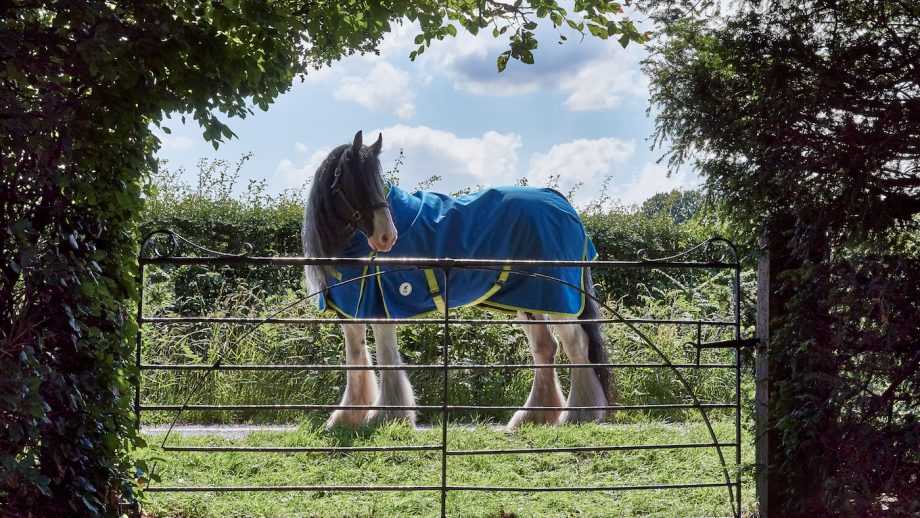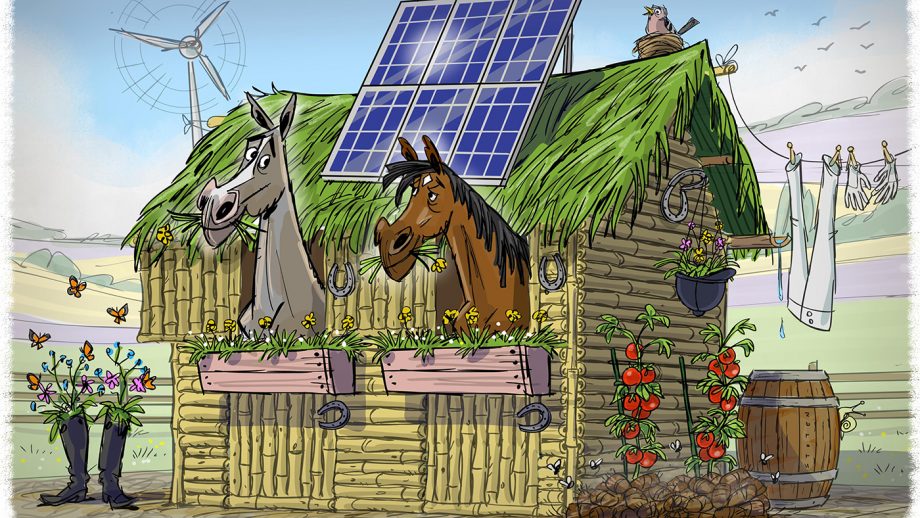Among new eco-friendly products for equestrians is a rug made from 110 plastic bottles and breeches made from a fabric that contains plastic waste from the sea. H&H reviews the latest developments as the industry embraces greener options...
Horses and riders can now wear plastic as well as cutting down on single-use items, as the equestrian world makes further environmentally friendly efforts.
A turnout rug made from the equivalent of 110 plastic bottles is now on the market, while riders can wear breeches made from plastic waste taken out of the seas.
Danielle Reynolds, founder of DVR Equestrian which makes the Dexter recycled “trackpant” breeches, told H&H that using the ocean waste-containing fabric is just one of her green practices.
“I was never not going to be eco-friendly when I started my own brand,” she said.
“There are so many environmentally friendly fabrics on the market, I can’t see any excuse not to use them; I think the equestrian industry has been a bit slow to realise, but it is picking up.”
Ms Reynolds said the recycled fabric has “incredible” technical properties, so as well as saving seven barrels of crude oil and 5.7 tonnes of carbon dioxide equivalent emissions per ton compared to normal polyester or polyamide, the clothes it makes are of high quality.
She also cited the “price per wear” of products. A pair of leggings might be half the price of another, but if they only last a quarter of the time, the value is lower, as well as the fact more fabric may end up in landfill.
She also offers free repairs on her products.
“A lot of riders repair rugs but might not think of it for their own clothes,” she said. “One of my best customers sent some leggings back for repair and I was really excited to see that after over two years’ wear, the fabric was undamaged, it was just the seams. I fixed them, so she can have another however many years wearing them.
“As a brand, it’s everything; I’ve gone for safety pins instead of plastic swing tags and a stamp instead of stickers for postage, as I realised how many stickers would go straight in the bin.
“As long as people make any little changes they can, something’s being done. I’m passionate about this way of thinking.”
A spokesman for Derby House told H&H its Evolution turnout, which it believes is the world’s most sustainable horse rug, is eco-friendly because it is free of PFC chemicals, and has been “taken to new heights” with the recycled nature of its fabrics.
The spokesman said PFCs, per- or poly-fluorinated chemicals, are used to make fabrics waterproof, but these are harmful to the environment. The Evolution uses a different waterproofing agent, and Derby House hopes to expand its use of PFC-free fabrics in its rugs.
“In the world of equestrian, this is a unique offering and one that might just act as the gear change the industry needs,” a Derby House spokesman said.
“Using recycled plastics is exactly the kind of lever we need to be pulling when attempting to make recycling a viable solution.”
And the way the rug is delivered has not been ignored; Derby House packaging is 99.81% plastic-free.
“There’s always a better way,” the spokesman said. “We simply need to press pause from time to time, consider things as they are and make better decisions.”
You may also be interested in…

New eco-friendly turnout rug made from 110 plastic bottles
“This is a unique offering and one that might just act as the gear change the industry needs”

New “eco-friendly” horse bedding Equibright launched
Equibright, a new "eco-friendly and cost effective" horse bedding, made of soft, clumped briquettes that break down as you or

Safe, eco-friendly and budget-friendly: H&H’s stable lighting tips
Does your stable and arena lighting system need an overhaul? Check out H&H’s top tips on the best and safest

Ways to create an eco-friendly stable yard
Stephanie Bateman investigates how to build or adapt stables on a low carbon footprint and why constructing a yard need

How green is your yard? 6 budget-busting eco-friendly solutions
Eco-friendly design can be incorporated into everything from light bulbs to storage solutions — and it could save you money


